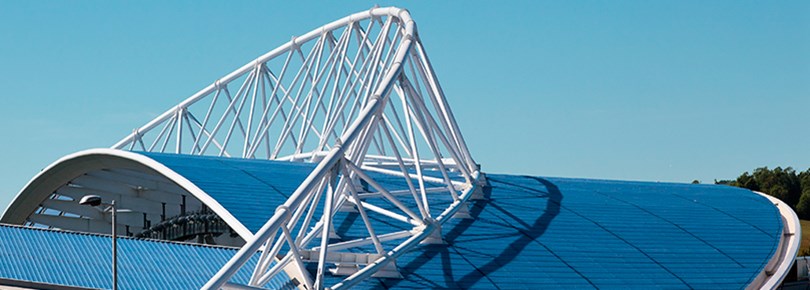How are bearings used in Civil Engineering and Construction?
September 2017

Fluoroglide® slide bearings are superior to conventional expansion plates, rollers and rocker arms, because they accommodate expansion and contraction, as well as other reciprocating motions of thermal, seismic or differential forces. They are used to control and isolate vibration.
Such bearings operate at high loads and low speeds, and it is under these conditions, together with its no stick slip and anti-weathering characteristics, that the self-lubricating properties of Fluorinoid® PTFE are at a maximum, they can be used in the construction process or as part of the structure itself.
Applications
- Buildings and bridges.
- Pedestrian walkways.
- Stadiums.
- Car parks.
- Incremental Constructed Suspension Bridges.
- Expansion movements in pipelines, heat exchangers, concrete decks or pipes.
- Cryogenic, vibration and acoustic effects on pipelines.
- Steam heated pipelines in chemical plants and oil production modules.
- Oil, water and gas transportation above ground pipe mains.
Some examples of projects we have worked on:
Fluorinoid® FL100 dimple PTFE is available to the EN1337 specification, Fluorocarbon can supply sheets or formed sections for use in spherical bearings as used under the Thelwall Viaduct M6 bridge.
Fluoroglide® slide bearings were specified for use on the Queensferry crossing (Forth Road Bridge) to move the bridge segment tooling in the casting shop with maximum flexibility to an extract position for pouring concrete.
Fluoroglide® Slide Bearings were used by the contractor to move a new section of the Grand Union Canal, crossing the North Circular Road. This was a 24 hour operation to replace a new section without danger or delays to the road closure below.
A temporary skidway was constructed to move the Euro Tunnel boring machine into place way below ground level.
For more information on our slide bearings and expansion joints click here










